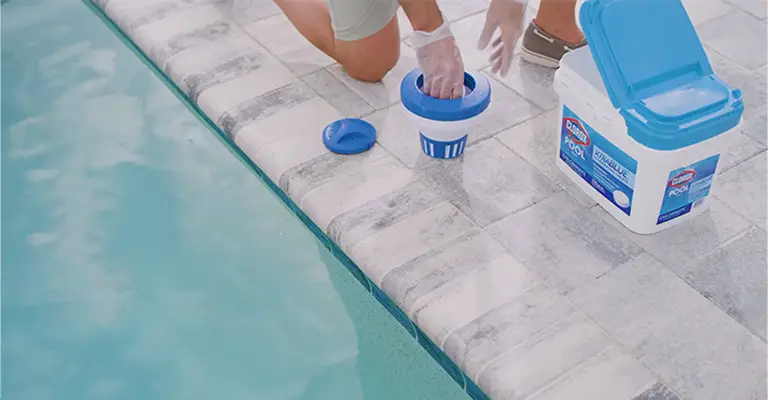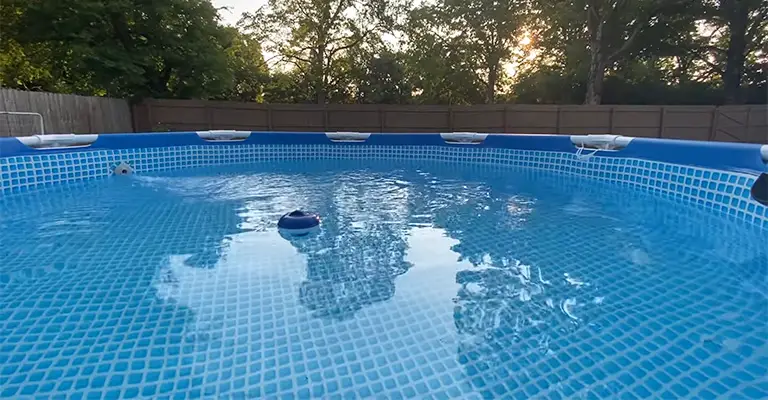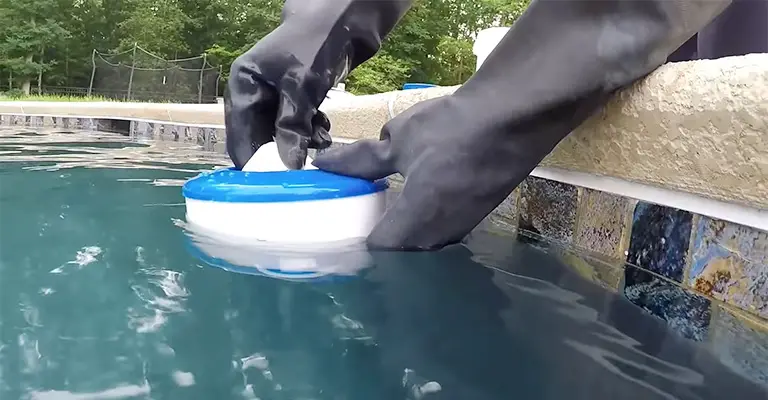The number of 1-inch chlorine tablets required for a 1000-gallon pool depends on the desired chlorine level and the tablet’s concentration.
It is necessary to use exactly zero tablets, 1 gallon of chlorine, and a small canister of stabilizer. You’ll have enough chlorine for the whole season, and stabilizer for at least two seasons if you don’t overdo it.
The standard recommendation is to maintain a chlorine level of 1-3 parts per million (ppm) in a swimming pool.
To calculate the number of 1-inch chlorine tablets needed for a 1000-gallon pool, you must consider the following factors:
- Chlorine Tablet Concentration: Check the label of the chlorine tablets for the concentration of available chlorine.
- Desired Chlorine Level: Determine the desired chlorine level for your pool. The ideal range is typically between 1 and 3 ppm.
- Rate of Dissolving: Consider the rate at which the chlorine tablets dissolve, as this will affect how quickly the chlorine is released into the water.
After considering these factors, you can use the following formula to calculate the number of chlorine tablets needed:

Once you have the required chlorine amount in milligrams per liter (mg/L), you can divide this value by the concentration of available chlorine in the tablets. This will give you the number of tablets needed.
Keep in mind that this is a basic formula and actual conditions might vary based on factors like pool usage, weather, and other chemical balances.
It’s always best to consult a pool professional or refer to the manufacturer’s guidelines for precise dosage instructions.
How Many Chlorine Tablets Do I Need in My Pool?

I have a 10000-gallon pool. How many tablets do I need? What about a 300-gallon pool? Is there a difference between a 1-inch tablet and a 3-inch tablet?
Does it matter how the pool is shaped? Is there a way I can calculate how many I’ll need for a 24-foot round pool? It is true that we can buy chlorine, most often in tablets of one or three inches in size.
However, 3-inch tablets are the most common. Only small pools can benefit from 1-inch tables. In contrast, 3 inches are longer lasting and require more time to dissolve, which is beneficial to stabilizing chlorine levels over time.
The lifespan of our tools will be shortened if chlorine levels are too high. On the other hand, we will be opening our pool up to all sorts of bacteria, algae, or parasites at low levels.
It is important to know the volume of our pool so that we can calculate how many chlorine tablets we will need.
In order to know how much chlorine you’ll need per gallon of water in your pool, you’ll need to determine how much water can fit in your pool.
It is recommended that one tablet of 3 inches be used for every 5000 gallons of water.
| Capacity (in gallons) | Number of tablets (3 inches) |
| 5000 | 1 |
| 8000 | 2 |
| 10000 | 2 |
| 15000 | 3 |
| 30000 | 6 |
Use the table above to calculate the number of chloride tabs needed.
We should round up for the next 5000 gallons, as we can see in the table for the 8000 gallon case.
What if the pool is smaller? A chlorine tablet that measures one inch in diameter is referred to as a chlorine tablet for a small pool. For every 300 gallons of water, one tablet would be a nice rule of thumb.
Facts About Chlorine Tablets

In order to keep your pool clean and bacteria-free, chlorine tablets are essential. Using them, you can keep your water clean and healthy without having to use harsh chemicals.
Water, food, and other items contain chlorine, which is a chemical element. Your salt from the barbecue you had last Sunday contains it. When it comes to our pools, it provides us with protection from algae, bacteria, parasites…
There are various types of chlorine tablets and they can be used in various types of pools. When you need to clean your 10ft pool regularly, you will need a different amount than if your pool is 1000 gallons or 5000 gallons.
It is common for chlorine tablets to contain other ingredients besides chlorine. Other components are added to make the protection more effective and longer lasting. Cyanuric Acid (CYA) is the most common pool stabilizer.
The tablets are referred to as “stabilized chlorine tablets”. Their purpose is to protect chlorine against harmful UV sun rays. This source may also add calcium and other elements to the pool, making it easier to treat it.
Why Do We Use Them in Pools?

What is chlorine’s role in helping us? What makes a small tablet so effective at eradicating bacteria?
As chlorine tablets dissolve, they release what we call “Free Chlorine”. If no bacteria or uninvited guests enter the pool, it will remain there. Combining with the invader will then destroy it.
We are left with noncontaminated water, however, the free chlorine has become “combined chlorine”, now inactive, so it needs to be replaced.
How can I do that? The more chlorine we add to our water, the better, so that it remains as clear as… water.
Are There Alternatives To Chlorine Tablets For The Pool?
There are two types of chlorine: liquid and granulated. Chlorine granules are commonly used as shock treatments in pools.
In addition to dissolving faster, it is effective in killing algae and bacteria. In the presence of heat and sunlight, liquid chlorine is not often used because it degrades quickly.
Due to this, storing it becomes much more challenging. Additionally, you may not know how much to add.
Final Words
There are many benefits to using chlorine tablets. If you have a large pool, an automatic chlorinator is the best option. A floating dispenser can be used if there is a small pool for kids (maybe an inflatable one).
Adding tablets to the skimmer can provide chlorination even in the absence of an automatic chlorinator. Automatic chlorinators, however, are the most helpful device in the long run.








